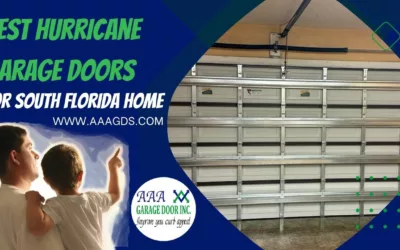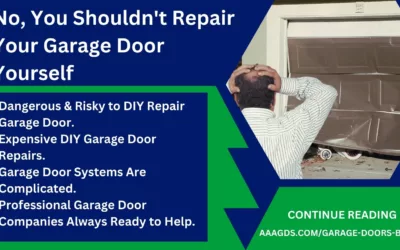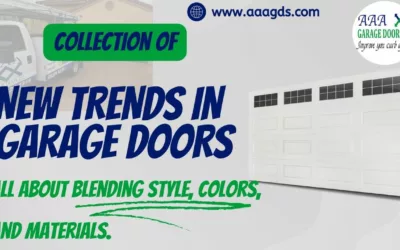A small troubleshooting garage door can go a long way in keeping the construction and functionality of your door. Your garage door endures through daily use because of the number of cycles, repairs to the garage door and annual maintenance are common.
Although you may not be able to manage repairs and maintenance on your own, there are prevalent problems you may be able to solve yourself. Identify and recognize the earlier but before you try to fix u have first to get noticed the most common problems that could u face with your garage door.
REMEMBER: You should do these tips for troubleshooting at your own risk.
So what are the most common problems with old garage doors
Garage doors do not open or close correctly
Doors move unevenly from side to side During opening and closing
Your garage doors make a very loud noise
Cracked or broken weather sealant
Sounds with Cracks or gaps
Unsightly and damaging rust formation
But to fix the problem we need to know the source of it first so every garage door has its own Hardware Components. This is where things can begin to become a bit confusing for most individuals when it comes to the hardware components of the garage door. You will see a range of parts if you look at the back of the gate. These operate together in perfect harmony when everything works properly to open and close the door and of course, it leads to those problems we mention especially these noises that so let’s Know more about these components
Lift Cables: Your door might have lifting wires connected to the springs of the door and help to open and close the door.
Hinges: The hinges are located in between each sectional piece of the door. They help to keep the door in place and allow each section to bend as the door is opened or closed. You can tell the quality of the door by looking at the hinges. Better-quality doors use double hinges, which better support the weight of each door section.
Door Rollers: On the side of garage doors are small rollers or wheels. As the door is opened and closed, the wheels should turn freely inside the door tracks. If you want a quieter opening door, consider upgrading from galvanized steel to nylon door rollers
Springs: Springs are an essential part of the counterweight system used in garage doors. This system is what makes it possible to open and close the door with one hand. Springs are typically one huge coil at the top of the door. Some designs also have secondary springs located over the door tracks. Secondary springs are more common on heavier styles of doors. broken springs is one of the most problems that could happen which is the most complicated one and needs a lot of attention from you. if you planning to replace your garage door spring we made an article for you talking about How to repair your garage door spring in detail.
Hinges: The hinges are located in between each sectional piece of the door. They help to keep the door in place and allow each section to bend as the door is opened or closed. You can tell the quality of the door by looking at the hinges. Better-quality doors use double hinges, which better support the weight of each door section.
Door Tracks: The tracks are the metal parts that are connected to the door sides so that it can be readily opened and closed. The tracks are suspended in most households and attached to the roof of the garage.
Garage Door Opener: An opener is a motor tool that is connected to the garage door to automatically open and close. The opener has its own particular components and parts, including a lifting arm, manual disconnection, and chains.
Now it’s time to know the problems and how to fix it
Sticking Rollers: Spin and turn the rollers on the door sides. This can cause the gate to fall off its tracks if they are stuck and sliding. Stuck rollers can also lead the gate to be noisier in opening and closing. If in the open or closed position the door has come off its tracks, leave it in place. Trying to close or open the gate might also cause the wires and springs to break. If the gate is just loud, replace the rollers and clean the tracks. Stuck rollers are often caused by inadequate lubrication and excess moisture.
The opener runs but the gate doesn’t move: check that the automatic door disconnect cord wasn’t pulled by trying to manually open and close the door. If you can, re-attach the gate to the lift arm of the automatic opener. If you locked your garage door, another prevalent cause of this issue is. Check that the gate is not locked.
Door Opens But Won’t Close: Sensors often have to do with this issue. If the lenses get dirty or something is right in front of them, they will stop closing of the gate. Clean the lenses and check that the sensors are not in the way. If the door doesn’t close yet, it’s time to call a technician for garage door repair.
U Might Also Like : what to do when your garage door won’t open?
The Door Sticks or Stops: from modifications in humidity concentrations to an absence of adequate lubrication on moving components and parts, a sticking door can be quite prevalent. If the gate is no longer level and needs to be realigned, it could also be triggered.
The Remote Controler Doesn’t Work: If the remote control for your opener doesn’t work, see if the inside garage switch allows you to open the door. If the gate opens, the batteries that need to be replaced may be indicated. If the remote still does not work after replacing the batteries, it may need to be re synchs or substituted with the opener.
We can help u with some consultation if u give us a call we are always here to help you and our success begins with you: Call Us at (305) 702-0113






0 Comments